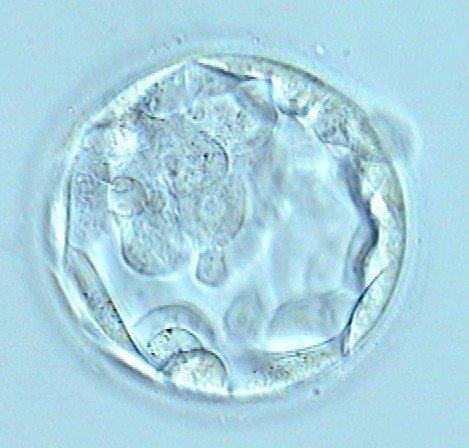The Instituto Bernabeu confirm that embryo cell abnormality detected by next-generation sequencing does not affect birth rates
August, 30th 2017

This is one of the 10 posters by the IB researchers that have been accepted by the scientific committee of the Annual Meeting of the European Society of Human Reproduction and Embryology (ESHRE).
The scientific committee of the European Society of Human Reproduction and Embryology (ESHRE) has selected the study by the Instituto Bernabeu “Does the low-grade mosaicism detected by next-generation sequencing affect the live birth rate?” as one of the 10 posters presented by the reproductive medicine clinic at the meeting held in the Swiss city of Geneva from 2 to 5 July. In the study, which centres on the chromosomal abnormality of embryos detected by next-generation sequencing (NGS), the researchers emphasize in their conclusions that the transfer of embryos with a low-grade mosaicism can lead to healthy children and the live birth rate, which is similar to that of embryos implanted without these abnormalities.
The researchers look at the selection that can be made of chromosomally normal embryos with preimplantation genetic screening (PGS) by using the next-generation sequencing (NGS) technique. This leads to an improvement in the results of in-vitro fertilization (IVF) since it detects chromosomally normal embryos, those which are abnormal and also those known as mosaic, which have both normal and abnormal cells. In the case of mosaic embryos, studies show that the abnormal cells are replaced with normal cells and that they may be implanted and are able to develop into a healthy child, although the success rate is somewhat lower.
The research carried out at the Instituto Bernabeu has used NGS technology to detect low-grade mosaicism in the embryos transferred, that is mosaicism that affects a small percentage of cells in the embryo. After statistical analysis of the data it is observed that there are no significant differences in the percentage of births with the transfer of low-grade mosaic embryos.
In their conclusions, the authors of the study, the doctors Ruth Morales, Belén Lledó, José Antonio Ortiz and the medical director, Rafael Bernabeu, advise that the transfer of these embryos should be considered in some cases and that the patient should be given advice and explanations.
Does the low-grade mosaicism detected by next-generation sequencing affect the live birth rate?. R. Morales, B. Lledó, JA. Ortiz, J. Ten, J. Ll. Aparicio, R. Bernabeu
